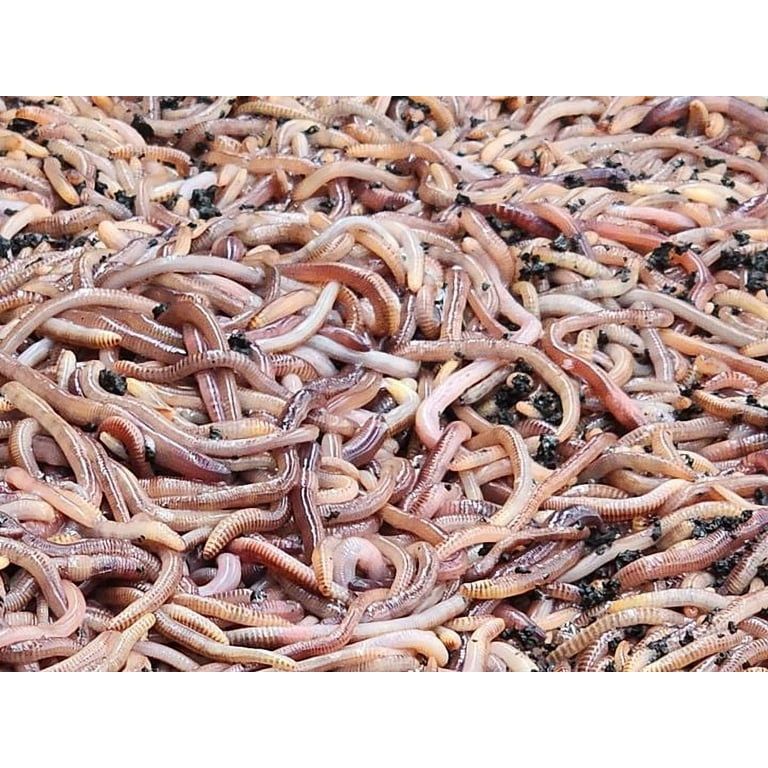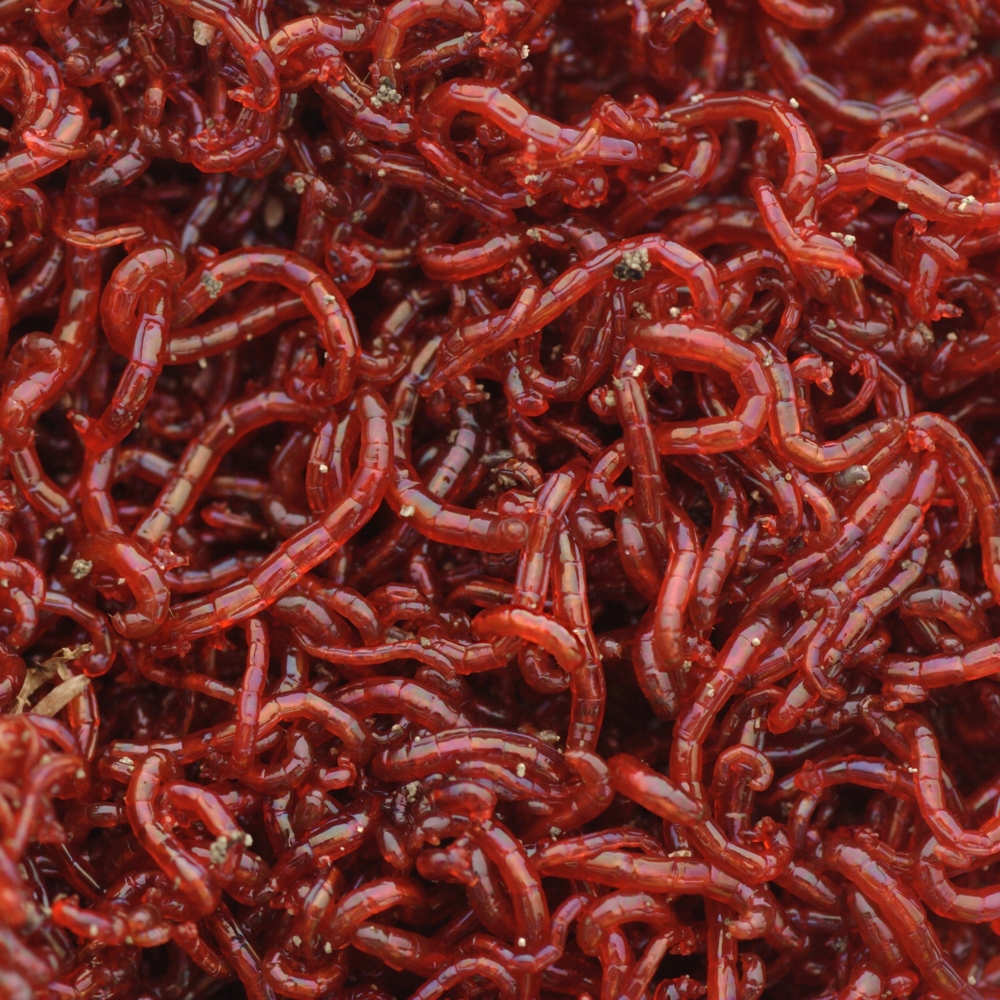Red worms: Easy care tips
Red worms: Easy care tips
Blog Article
Just How Red Wigglers Can Boost Your Organic Waste Recycling
Red wigglers represent a crucial part in enhancing organic waste recycling, effectively converting everyday cooking area scraps and garden debris into important worm spreadings. This process not just minimizes the volume of waste sent to land fills but likewise enriches soil vigor, promoting healthier plant development without the need for synthetic plant foods. Comprehending the complexities of developing a vermicomposting system and the optimal treatment for these worms can considerably amplify the advantages. Yet, the question remains: exactly how can one effectively integrate this technique right into their routine to make best use of effect?

Advantages of Red Wigglers
Red wigglers, a sort of composting earthworm, offer numerous benefits that make them very useful in natural waste recycling. Their ability to eat a wide array of natural materials makes them extremely effective decomposers. These worms can process cooking area scraps, garden waste, and also paper products, changing them into nutrient-rich castings. This process not only lowers the volume of waste sent to landfills but likewise improves dirt wellness.
Furthermore, red wigglers boost soil aeration and water drainage via their delving activities, advertising a much healthier origin atmosphere for plants. Their spreadings are rich in valuable bacteria and vital nutrients, promoting robust plant development and improving dirt structure (red wigglers). Additionally, making use of red wigglers in composting is an ecologically friendly option to chemical plant foods, which can have harmful negative effects.
Additionally, vermicomposting with red wigglers is a low-maintenance and effective method of recycling natural waste, making it accessible for houses and communities alike. Their rapid recreation price makes certain a consistent supply for recurring composting efforts, additionally amplifying their advantages. In general, red wigglers function as an essential component in lasting waste monitoring and dirt enhancement techniques.
Setting Up a Vermicomposting System
Producing a reliable vermicomposting system calls for careful planning and factor to consider of different elements that add to its success. The structure of an effective system begins with picking a proper bin. Options vary from industrial containers to homemade options, but it is critical that the container is well-ventilated and properly sized to accommodate the variety of red wigglers.
Next, the selection of bed linens product is important. Ideal bedding includes shredded paper, cardboard, or coconut coir, which supplies both an environment and a resource of carbon for the worms. The bedding ought to be moistened but not overly damp to avoid anaerobic problems.
Maintaining the ideal atmosphere is necessary. Red wigglers thrive in temperatures in between 55 ° F and 77 ° F(13 ° C to 25 ° C )and call for a pH level around neutral. Monitoring moisture levels is also crucial, as excessive wetness can result in smell troubles, while inadequate can dry the worms.
Finally, putting the vermicomposting system in a shaded area secured from direct sunshine will certainly aid maintain a steady setting. With these considerations in mind, one can efficiently set up a prospering vermicomposting system that boosts organic waste recycling.
What to Feed Red Wigglers
Feeding red wigglers the best materials is essential to preserving a healthy vermicomposting system. These worms flourish on a diverse diet mostly made up of raw material, that includes fruit and veggie scraps, coffee grounds, crushed eggshells, and shredded paper. It is vital to prevent feeding them meat, dairy products, oily foods, or any kind of processed items, as these can produce odors, attract parasites, and bring about a harmful atmosphere.
A well balanced diet for red wigglers advertises ideal digestion and nutrient manufacturing. Purpose for a mix of green materials, high in nitrogen, such as veggie peels and turf cuttings, and brownish materials, rich in carbon, like dried leaves and cardboard. This balance guarantees a lasting food resource while preserving moisture levels in the worm bin.
Moreover, it is a good idea to cut or shred bigger scraps to expedite decomposition and make the food a lot more accessible to the worms. Consistently keeping track of the usage rate will certainly assist figure out the suitable quantity to feed, protecting against overfeeding and maintaining a growing community. By providing an ideal diet regimen, you not just support the health of red wigglers yet also enhance the efficiency of your vermicomposting efforts.
Preserving Your Worm Bin
To ensure the health and performance of your vermicomposting system, preserving your worm container is essential. If it becomes as well damp, excess wetness can lead to anaerobic conditions, harming your worms.
Extreme temperatures can stress or eliminate your worms. To achieve this, position your container in a climate-controlled environment away from straight sunshine or heat sources.
Aeration is essential for oxygen flow. Carefully turning the bed linens with a garden fork every couple of weeks will aid aerate the material and prevent compaction. Additionally, be watchful concerning the bin's smell. A nasty smell may suggest overfeeding or a discrepancy in the carbon-to-nitrogen ratio. If this takes place, reduce feeding and add even more carbon-rich products like shredded paper or cardboard.
(Where To Buy Worms In North Carolina)
Utilizing Worm Spreadings in Horticulture

Worm castings, typically described as "black gold" by gardeners, are an extremely nutritious organic fertilizer that can dramatically improve dirt health and wellness and plant growth. These spreadings are created by red wigglers as they absorb natural matter, resulting in an abundant, dark, crunchy substance brimming with helpful bacteria.
Integrating worm spreadings right into yard soil boosts its framework, aeration, and moisture retention, creating an optimum atmosphere for origin development. The high nutrient content of worm spreadings, including nitrogen, phosphorus, and potassium, contributes to energetic plant development and increased yields. In addition, worm castings contain vital trace minerals and enzymes that promote the general health and wellness of plants, enabling them to better endure bugs and illness.
Worm spreadings can be applied straight to the soil or mixed right into potting mixes for container gardening. A thin Check This Out layer spread over garden beds or added to compost stacks can also improve the microbial task and nutrient account of the compost. As a lasting and environment-friendly fertilizer option, worm spreadings sustain natural horticulture practices while decreasing dependence on synthetic fertilizers, consequently promoting a much healthier environment.
Verdict
In conclusion, the assimilation of red wigglers right into natural waste reusing methods provides a viable service for improving soil health and wellness and promoting sustainable gardening techniques. By efficiently breaking down cooking area scraps and garden waste, red wigglers contribute to nutrient-rich worm castings that improve soil aeration and moisture retention. This eco-friendly strategy not just lowers land fill payments yet also diminishes the dependancy on chemical plant foods, inevitably cultivating much healthier ecological communities and liable waste monitoring practices.
Report this page